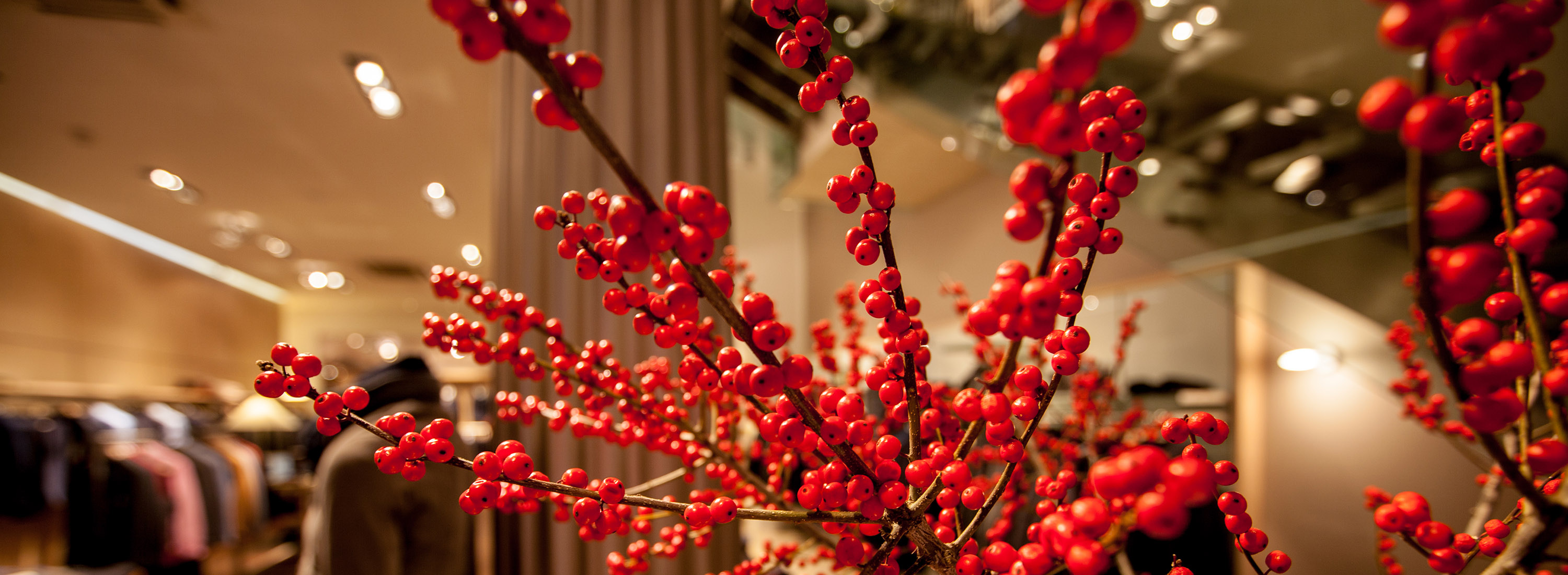Shop and showroom lighting
The right light setting invites customers inside and sells goods. A badly planned one sends them on to the competitor. And it's that simple, in fact. But of course there is far more to it than this. And so it may be a good idea to read this short article on lights for stores and showrooms. Hope you will feel inspired afterwards.
It sounds banal and simple, but overall it is not the store or your showroom that needs to be lit; it is the goods that need to be highlighted. That's how simple it actually is - in the first place. It is also about inspiration and variation. And it's also about putting the right light on the right products.
What is the right lighting for the store?
There is no definitive recipe for what is the right light for the store or showroom. You can basically say that the right light is the light that inspires your specific target group to choose your goods over the competitor's. Logic or volapyk? Try to think in moods and images. Much like the skilled photographer who uses light to create the right mood in his images, you can get your target audience to respond positively to a particular lighting (and mood). If it is a discount or perhaps a tool that needs to be over the counter, you will probably come the furthest with clear and bright light. If you sell quality products to discerning customers, the light (and decor) must be more atmospheric, so that customers feel that they are being enjoyed a little. Hope it makes sense? Otherwise, give us a call and ask for Frank.
How to use the light to draw customers attention
When your store or showroom has an open glass facade, the right light can "lure" customers inside. Therefore, place some items that will catch the attention near or in the window and highlight them. Typically with some good narrow beam spots that also provide a more accurate staging of your goods. Also, think about how you can use the decor and the light to draw the attention of passers-by further into the store. The better they can see what's going on, the greater the chance that they will be lured inside.
Also put extra light on the right items
Once the customers have come inside, all items must of course be properly lit; but if you have items that you, for example, earn extra well on, it is a good idea to highlight them with a little extra light. It unknowingly catches the attention of customers and visitors. This is best done with some good powerful spots placed and adjusted carefully - as when the theatre's sequel highlights the actors.
The color temperature of the light is also crucial
We have a cunning customer who uses the color temperature of light as a lure. In the summer, the lights in his shop are cold and clear, so passers-by feel they can come in and be cooled off a bit. In winter it is the other way around; the light is warm. And it works! We are not saying that everyone should play with the seasons that way, but the story tells a little about how important it is to hit the right color temperature. There are also cultural differences. In Southern Europe, most people prefer cold and clear light, but at our latitudes the light should be a little warmer, and therefore we mostly recommend our Nordic customers a clear warm color of 3000 Kelvin (CRI +90).
By the way, did you know that the Kelvin temperature in terms of light is defined by the light emitted by a heated steel ball? At very high Kelvin degrees, the sphere is incandescent. Therefore, a high color temperature is also, conversely, an indication that the light is cold!
Color rendering is crucial to the experience of your products
You who sell clothes probably already know how much of a difference a good lamp can make when the customer has to assess whether the trousers are black or dark blue. But the color reproduction is also crucial, for example, for whether the steak, for example, seems red and juicy or gray and dull. There are even decidedly food lights. The color rendering therefore has a decisive impact on the experience of your products. The good news is that LEDs are now so developed that you can achieve extremely good color reproduction with power-saving LEDs. Before, it was the halogen or the precious metal halogen that was the only thing that could create the right color reproduction. Look for the CRI value. It should preferably be over 90 in order for your items to appear colorfast.
